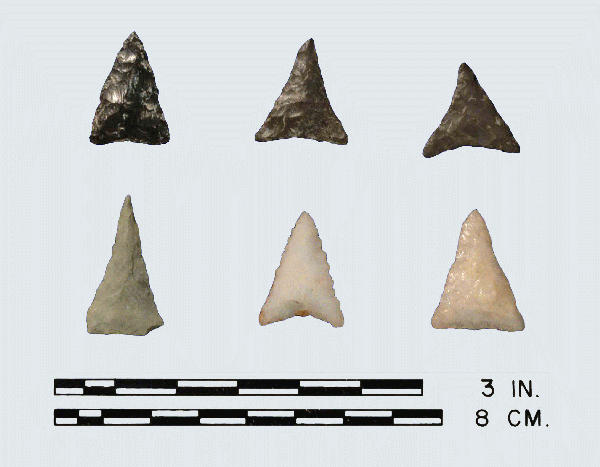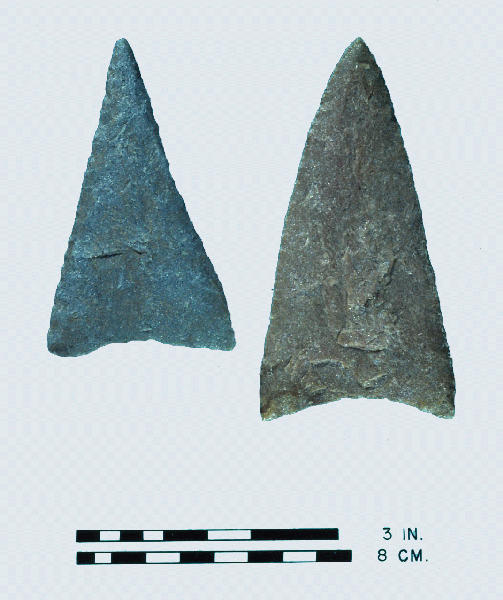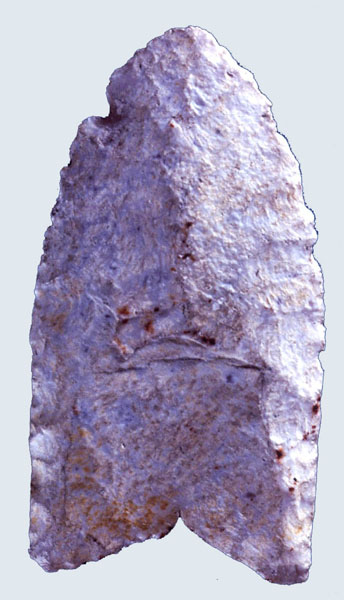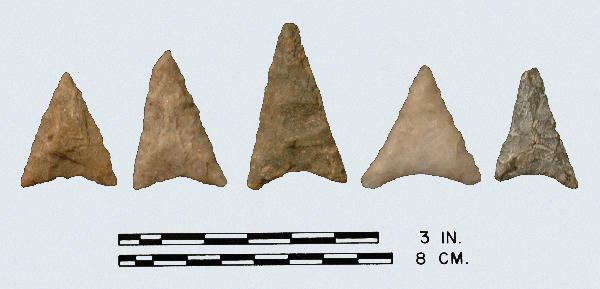
Caraway: Top Row: all chert; Bottom Row: tuff, quartz, quartz.

Triangular Knife 44CF0014
Late Woodland
Defining Attributes
The Caraway is a small, thin, triangular point with a straight or slightly concave base.
Chronology
The Caraway point dates to the Late Woodland period, 1200 to 1700 CE.
Description
- Blade: The blade is an isosceles triangle with straight edges
- Base: The base is either straight or slightly concave.
- Size: Average length is 30 mm and average width is about 20 mm.
- Technique of manufacture: Pressure flaking.
Discussion
The Caraway is similar to other triangular points like the Hamilton type from Tennessee (Kneberg 1956).
Defined in Literature
This type was originally defined by Coe, based on points recovered during excavation of the Keyauwee Town in Randolph County, North Carolina in 1936. This type is also briefly discussed in Coe’s 1964 Formative Cultures of the Carolina Piedmont.
References




